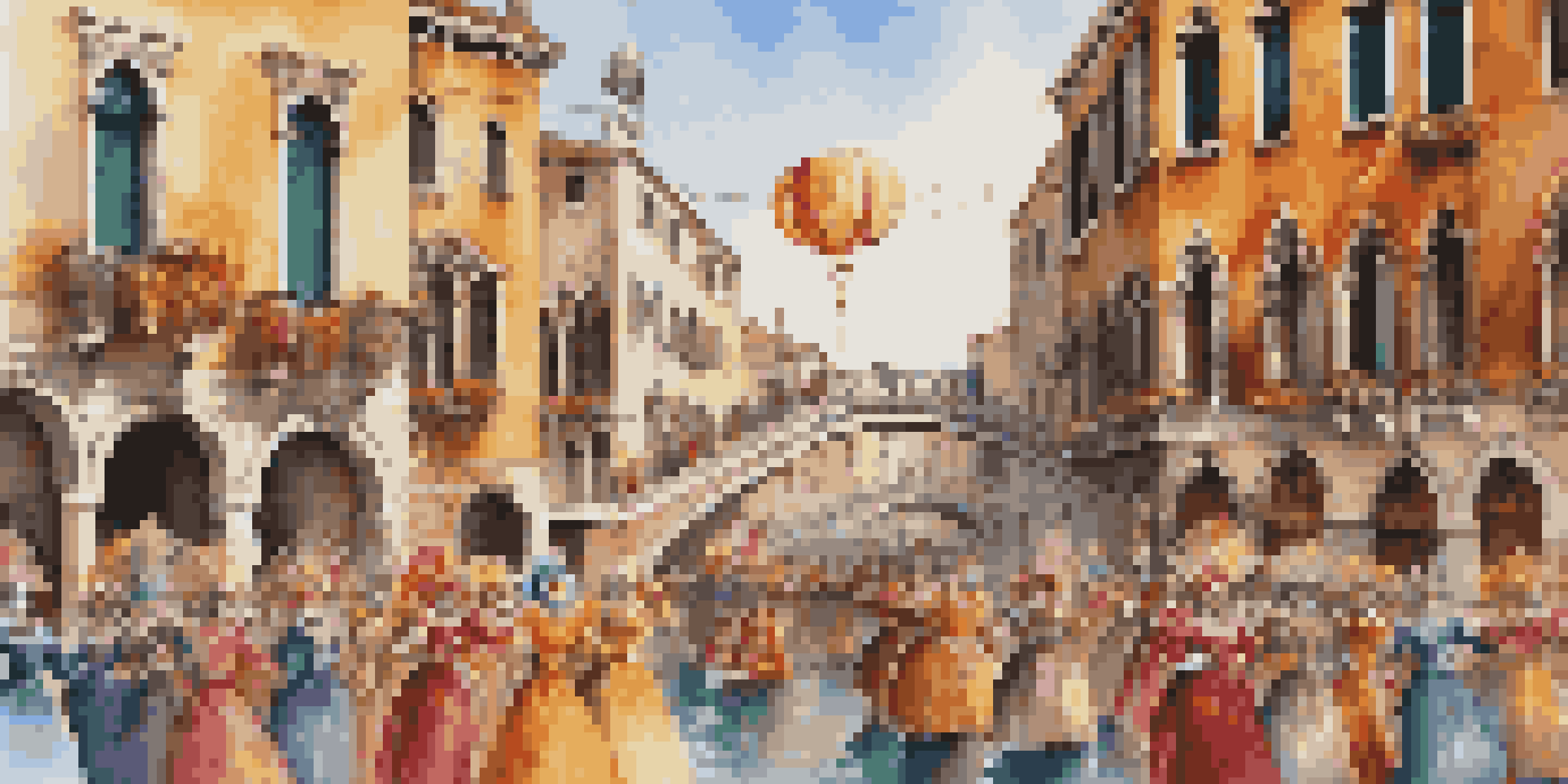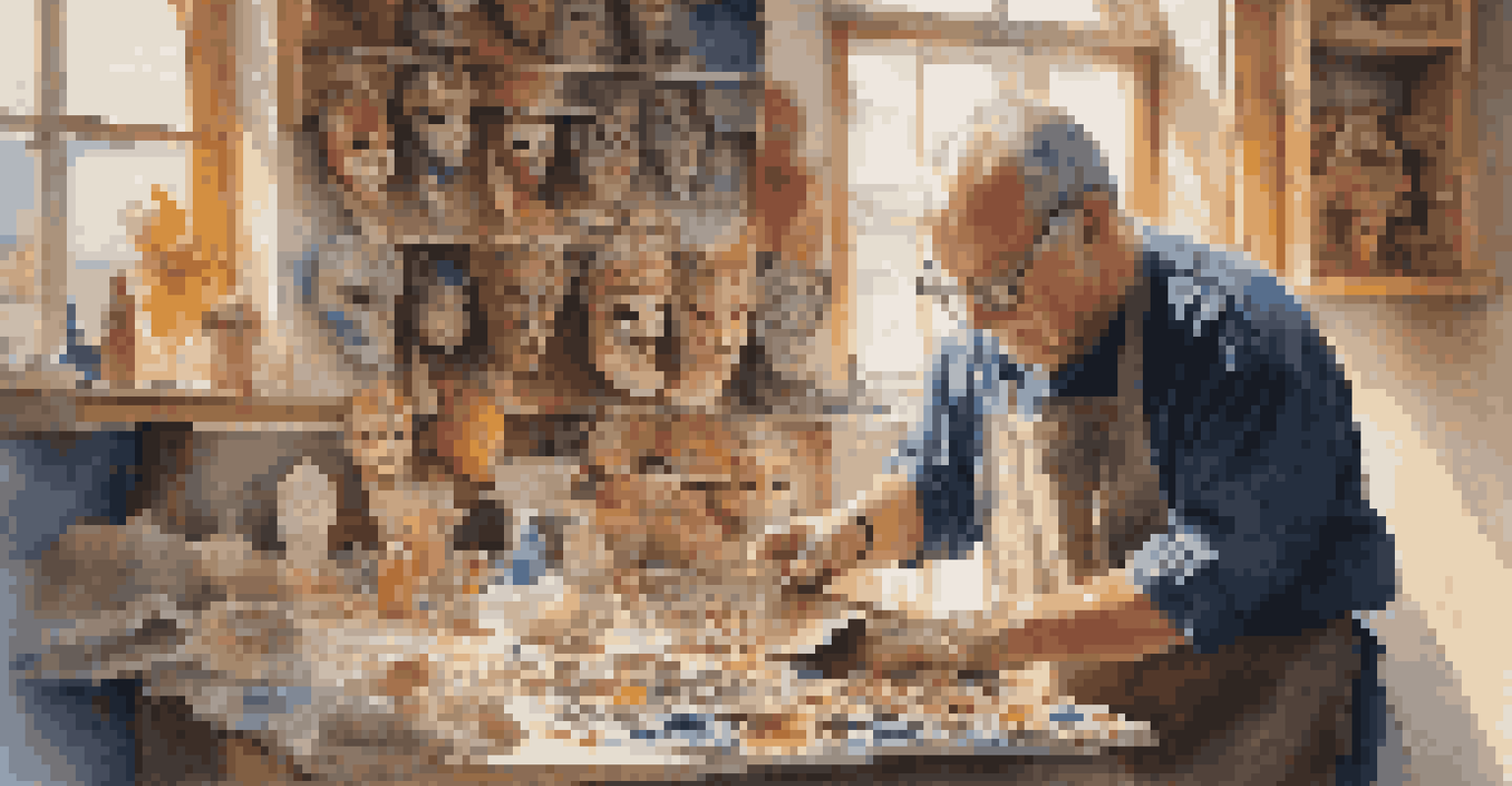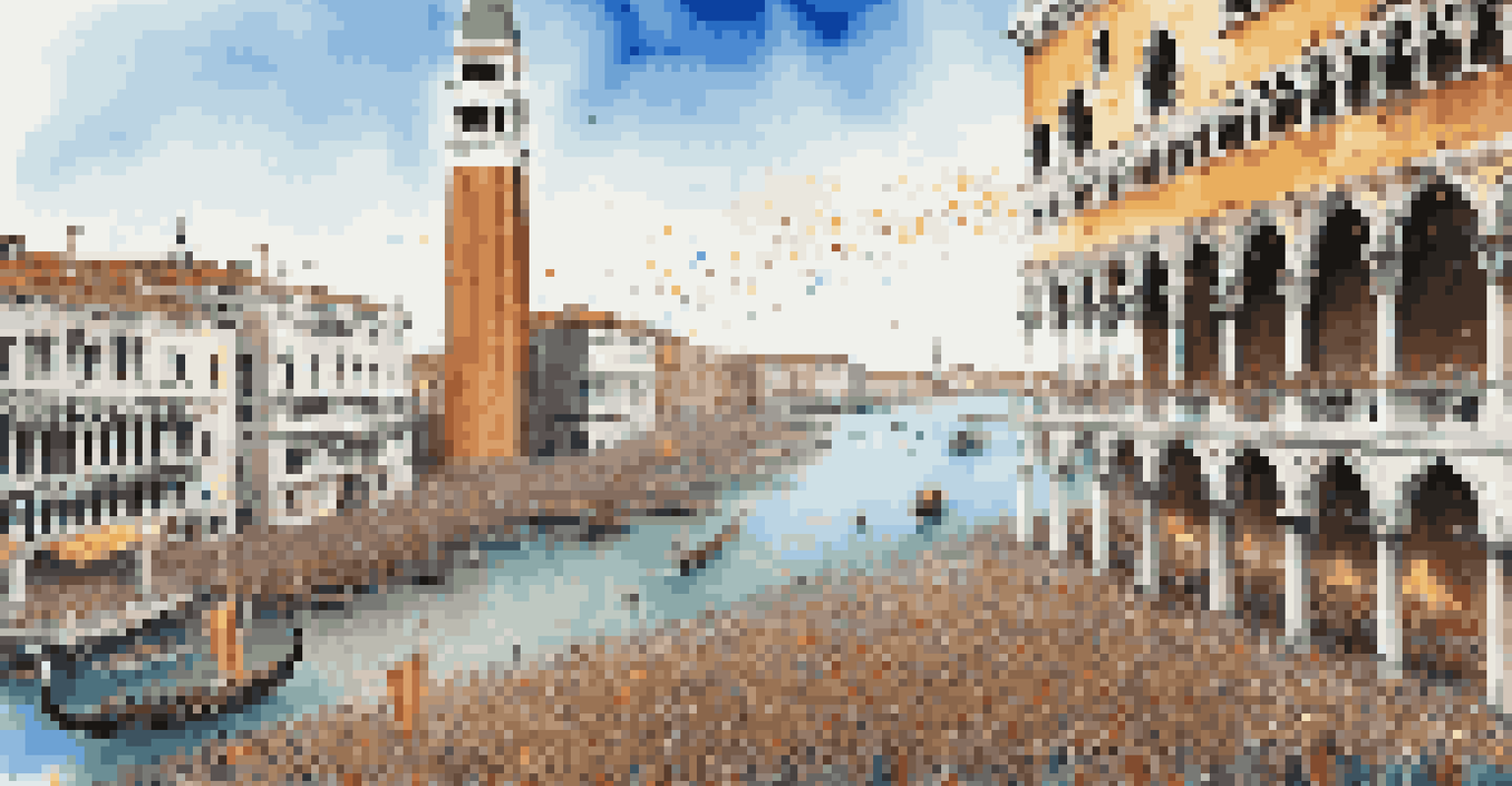The Art and Culture Behind the Venice Carnival in Italy

The Origins of the Venice Carnival: A Historical Journey
The Venice Carnival, with its origins dating back to the 12th century, is a vibrant celebration that showcases the city's rich history. Initially, it was a time for the Venetian nobility to indulge in festivities, allowing them to escape the rigid social norms of the time. Over the centuries, it has evolved into a grand event that attracts millions from around the globe, all eager to experience its unique charm.
Carnival is a time to escape reality and experience the extraordinary.
The term 'carnival' itself is believed to stem from the Latin 'carne vale,' meaning 'farewell to meat,' marking the period leading up to Lent. This festive time allows for extravagance and revelry before the solemnity of the fasting season. Imagine a city transforming into a stage where everyone dons masks and costumes, blurring the lines between social classes and allowing freedom of expression.
Today, the Carnival is not just a local event but a cultural phenomenon that represents the artistic soul of Venice. Each year, the event showcases the city's history through elaborate parades, intricate masks, and themed balls, inviting visitors to step into a world of whimsy and creativity.
The Masks: Symbols of Mystery and Tradition
Masks are at the heart of the Venice Carnival, serving as both a fashion statement and a means of anonymity. Traditionally, they allowed people to break free from their everyday identities, fostering a sense of liberation and uninhibited celebration. The intricate designs range from the simple to the ornate, each telling a story of its own.

Crafting these masks is an art form in itself, often passed down through generations. Artisans use materials like paper mâché and leather, infusing each piece with creativity and skill. For visitors, wearing a mask is not just about blending in; it’s an opportunity to embrace the spirit of the Carnival while connecting with a centuries-old tradition.
Historical Roots of the Carnival
The Venice Carnival, originating in the 12th century, has transformed from a noble celebration into a global cultural phenomenon.
Moreover, each mask carries its own symbolism, like the Bauta, which represents anonymity, or the Colombina, known for its flirtatious nature. This diversity in masks adds layers of meaning to the carnival, allowing participants to embody different personas and engage in playful interactions.
Costumes: A Showcase of Creativity and Artistry
Costumes at the Venice Carnival are no less remarkable than the masks themselves. Each outfit is a masterpiece that reflects the opulence and elegance of Venetian history. From the luxurious gowns of the 18th century to the flamboyant contemporary designs, every costume tells a story and captivates the onlooker’s imagination.
Masks are a way to express the hidden self, allowing us to explore our identities.
Participants often spend months preparing their costumes, ensuring that every detail is perfect. This meticulous attention to craftsmanship transforms the streets of Venice into a vibrant gallery of fashion and art, where creativity knows no bounds. Imagine walking through a sea of colors and textures, each outfit more stunning than the last.
The tradition of wearing costumes also has roots in the desire for anonymity. By dressing up, individuals can engage with others freely, fostering a sense of community and shared experience. It’s this blend of artistry and social interaction that makes the Carnival not just a visual feast but also a deeply engaging cultural event.
Parades and Events: The Heart of the Carnival
The Venice Carnival is renowned for its spectacular parades, where floats, performers, and musicians come together to create a lively atmosphere. Each event is meticulously planned, featuring themes that reflect the spirit of the Carnival and the rich cultural heritage of Venice. Attending these parades feels like stepping into a dream where fantasy meets reality.
One of the highlights is the 'Volo dell'Angelo,' or 'Flight of the Angel,' where a performer descends from the Campanile of St. Mark's Basilica, creating a breathtaking spectacle. This event symbolizes the start of the Carnival, captivating audiences with its blend of excitement and tradition. It’s moments like these that illustrate the Carnival’s ability to weave together history and contemporary celebration.
Masks and Costumes Unite Tradition
Masks and costumes not only enhance the visual spectacle of the Carnival but also allow participants to connect with centuries-old traditions.
In addition to parades, there are countless balls and parties, offering attendees a chance to immerse themselves fully in the Carnival spirit. From elegant masquerade balls to lively public festivities, there’s something for everyone, making it a truly inclusive celebration of culture and creativity.
Culinary Delights: Tasting the Carnival Experience
No cultural celebration is complete without indulging in local cuisine, and the Venice Carnival is no exception. Traditional sweets like 'frittelle' and 'chiacchiere' are a must-try, embodying the festive spirit of the season. These treats are not just delicious; they are a representation of Venetian culinary traditions passed down through generations.
Frittelle, often filled with cream or fruit, are deep-fried pastries that offer a perfect balance of sweetness and texture. On the other hand, chiacchiere, thin and crispy, are dusted with powdered sugar, making them irresistible. Enjoying these delicacies while watching the festivities unfold adds another layer of enjoyment to the Carnival experience.
Food during the Carnival is not merely about sustenance; it's about sharing moments with friends and family. Many local eateries offer special Carnival menus, allowing visitors to indulge in the flavors of Venice while immersing themselves in the culture. It’s a delicious way to connect with the spirit of the celebration.
The Impact of the Carnival on Venice's Culture
The Venice Carnival is more than just a festival; it’s an integral part of the city's cultural identity. It attracts artists, performers, and visitors from all over the world, fostering a sense of community and shared appreciation for the arts. This influx of creativity and diversity enriches the local culture, making it a melting pot of ideas and traditions.
Moreover, the Carnival serves as a platform for promoting Venetian craftsmanship, particularly in mask-making and costume design. Local artisans gain recognition and support, ensuring that these age-old traditions continue to thrive. This symbiotic relationship between the Carnival and the local economy underscores its significance in preserving the cultural heritage of Venice.
Culinary Delights Enhance Experience
Traditional Venetian sweets like 'frittelle' and 'chiacchiere' embody the festive spirit, enriching the Carnival experience for attendees.
In a world that often feels increasingly disconnected, the Venice Carnival reminds us of the power of art and celebration to unite people. It’s a time when differences are set aside, and everyone comes together to celebrate life, creativity, and community.
Preserving the Tradition: Challenges and Future of the Carnival
As enchanting as the Venice Carnival is, it faces challenges in preserving its authenticity amidst modernization and commercialization. With the influx of tourists, there’s a fine line between maintaining the traditional spirit and catering to a broader audience. This concern prompts discussions about how to keep the Carnival rooted in its historical significance while embracing contemporary influences.
Local organizers are committed to ensuring that the essence of the Carnival endures. Initiatives such as workshops for mask-making and costume design aim to engage younger generations, instilling a sense of pride and responsibility towards Venetian culture. By fostering this connection, the hope is to cultivate a future where the Carnival remains a vibrant celebration of art and tradition.

The future of the Venice Carnival is bright, with ongoing efforts to balance tradition and innovation. As long as there are passionate artisans, dedicated communities, and enthusiastic participants, the Carnival will continue to thrive, enchanting everyone who steps into its magical realm.